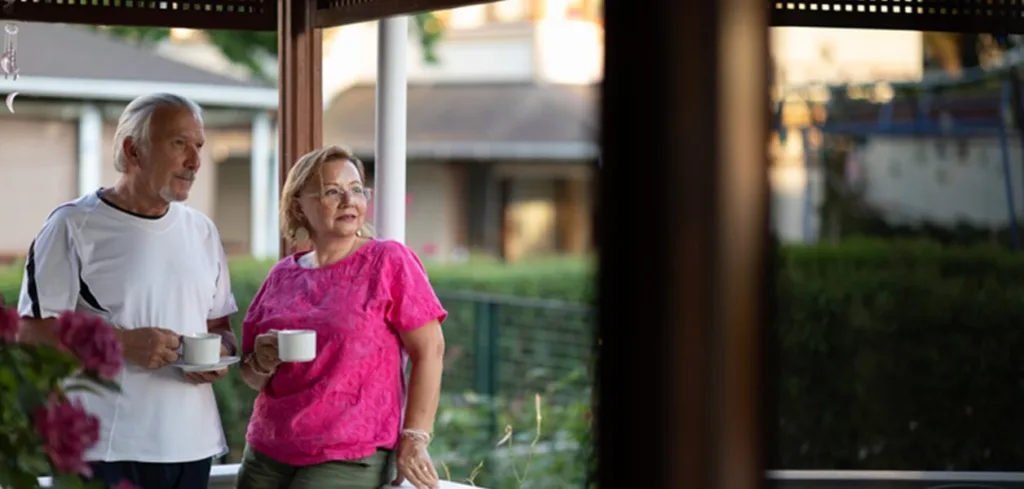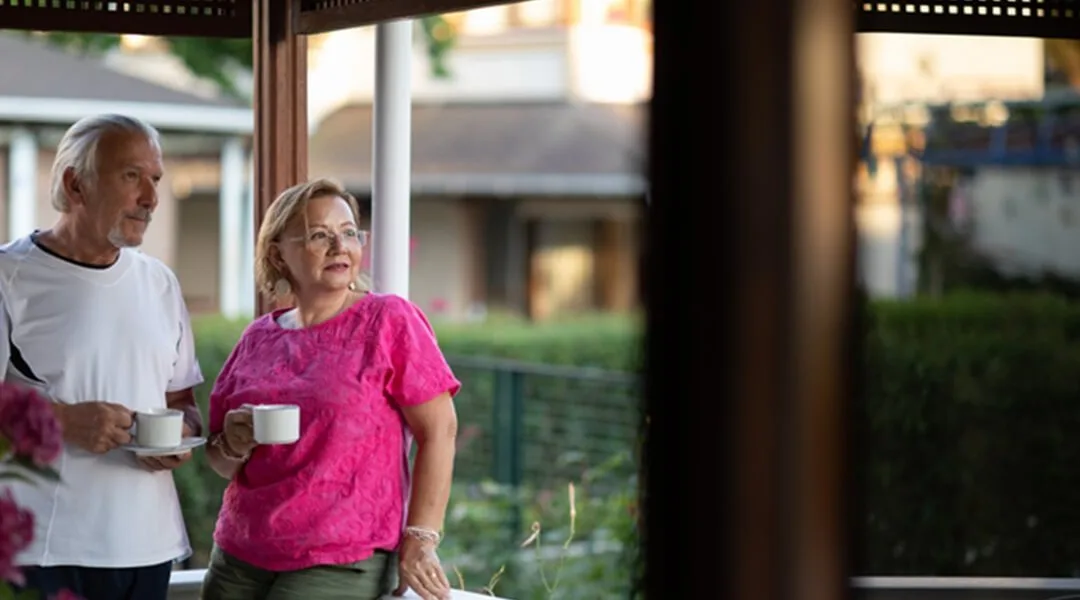
Many older Australians would love to receive a Universal Pension – one that is simply paid to everyone above age 67 without the need to go through torturous income and asset reporting. But these two tests are the mainstay of Age Pension eligibility. Today we are sharing a refresher on the way the asset test is applied by Centrelink and how knowing the rules can help you to maximise your entitlements.
Why are both income and assets evaluated?
The Australian Age Pension is based on a means test that combines the income test and the assets test. Generally speaking, Centrelink will determine your income first. If this falls below the limit, it will then consider your assets. If either your income or assets are above the limit for a part-Age Pension, you will be ineligible for any Age Pension benefits.
If both your income and assets are below the limit, whichever one delivers the lower Age Pension payment will be applied.
Which assets does Centrelink define within the means test?
Centrelink has two broad categories for assets – exempt and non-exempt.
Exempt assets are mainly related to property or accommodation and include:
- principal home (and surrounding land up to two hectares on the same title)
- principal home, (if the applicant/s vacate it for up to 12 months or two years if entering a care situation)
- the proceeds from the sale of your principal home which are exempt for 12 months from the sale date
- any property or money left to applicant/s in an estate, which the applicant’s can’t get for up to 12 months
- residential aged care accommodation bonds
- some pre-paid funeral contracts
Non-exempt assets generally relate to personal and financial investments, including a partner’s assets, which are automatically included in a couple assessment. They include:
- Superannuation investments in an accumulation account (BUT if your partner is under age pension age, their super is not counted)
- Income streams
- Shares and managed investments
- Business or trust assets
- Loans to other people or businesses
- Some funeral investments (others may be partially or fully exempt)
- Assets that you have given away to children or others (referred to as gifting)
- Special disability trusts
- Cars
- Boats and caravans
- Household contents
Which of these assets are deemed to earn income?
Financial assets have income deemed on them. Centrelink cannot accurately work out the individual returns across every older Australian’s assets every year. So it applies a ‘deeming rate’ to certain financial assets which are likely to earn a return. The current deeming rates are historically low. They have been frozen until 1 July 2024 in order to give Age Pensioners some security on their returns in the wake of the covid pandemic.
The current rates are 0.25% on your financial assets up to $60,400 (Singles) or $100,200 (Couples) and 2.25% on your financial assets over these thresholds.
What can go wrong with asset reporting?
You know the one-liner from sitcoms, ‘What could possibly go wrong’? Well it’s more than applicable to the reporting and evaluation of assets for Age Pension purposes. We have covered this recently in the story of Fiona who our adviser, Megan, found to have no fewer than four glitches in her assessment. The reporting and subsequent correction of these errors made a very real $410 per fortnight difference to Fiona’s income. Here are a few common errors when assets are reported:
- Double reporting of income and assets
Many people report their super fund (account based pension) balance as well as the income stream from these same savings. There is no need to double report. You could end up missing out on Age Pension entitlements.. You must report your super balance in the assets declaration. As per above, Centrelink will then deem this amount to earn a certain annual income and apply this within your application. If you also report the income you are receiving your income will be inflated unnecessarily.
- Overvaluation of assets
Whilst your home contents and your car are not deemed, they still count towards the assets test. Most of us view the value of such assets through rose-coloured glasses. Make sure you check the resale value of your car and that you only value household contents at garage sale prices, not the amount you paid, way back when, or the insurance replacement value. Overvaluation can cost you dearly when it comes to your actual fortnightly benefits.
- Could you earn more as a couple?
Are you in a relationship? If so, do you know the ‘younger partner’ rules?
A picture is worth a thousand words, so it may help to read the story of Natalie and Vijay who, with the support of an adviser, were able to transfer $80,000 of Natalie’s super in order to get a much better Age Pension outcome. They younger partner rules offer a very effective strategy for many couples to move into retirement by restructuring their assets effectively from the outset.
And last, but certainly not least …
It’s hard to ‘untell’ Centrelink
So make sure you know the answers before contacting Centrelink. It’s very hard to change your mind once you have made a declaration. So do yourself a favour and use Retirement Essentials free Age Pension Eligibility Calculator to determine your asset levels and likely eligibility before you jump into an application.
Need more support?
A Maximising Your Entitlements consultation supports you to assess any changes you might be able to make to maximise all Centrelink entitlements
And having a better understanding of your super through a consultation helps you assess all your options to make your super work even better.
What about you?
Do you find asset rules too difficult to follow? If so, are there any that are particularly tricky?






Is this correct….I report the amount I have in my Account Based Pension, but don’t report the income I draw from it?
thankyou
steve
Hi Stephen, thanks for kicking off the comments! You are correct, Centrelink assess ABPs as assets based on the total balance available, the amount you draw down from it is not assessable.
Hi Steven
In treating the value of a ABP as an asset, does Centrelink take into account that the balance of it is always declining?
How often are we required to report/update the amount in the account?
Hi Ian, thanks for seeking further clarity! Centrelink receive updates from super funds twice a year in March and September so they can account for the changes in balance. As such you do not have to notify Centrelink if you are simply drawing down the same set amount. If however, you were to take out an additional lump sum and make a significant reduction to the balance then you should provide evidence of the change to Centrelink within 14 days so that they can update your balance and recalculate your pension accordingly rather then waiting for the auto-update as Centrelink will not backpay you if you did not notify them at the time.
If i nominate my wife as a reversionary beneficiary in my ABP does this negatively impact my pension?
Hi Gary, thanks for seeking further clarity! No the act of nominating your wife does not have any negative impact to your Age Pension. The main thing to consider on this topic is that when one of you passes away, the other will then be assessed as a single person and have lower asset thresholds that they will be tested against.
Thanks so much for this helpful advice.
Under non exempt assets you have not included investment property. If one has an investment property producing income is the asset deemed or must the net income be declared?
Hi Wilbur, thanks for asking a great question! The answer depends on whether the investment property is in your name or in the name of a self-managed super fund (SMSF). If the property is in your name then deeming is not applied, only rental income is counted as income. If however, the property is in the name of an SMSF then deeming is applied because any/all assets held within a SMSF are treated as financial assets.
In relation to investment property. If I have a vacant land which is not deriving any income. Is this declared as asset by Centrelink.
Hi Mary, thank you for your question! Yes a vacant block of land would still be classed as an asset as you could sell it for a lump sum. No there would not be any income assessable on the land as owning a vacant block of land does not earn you any kind of income/return.
I am 81 and my wife is 76, we have an investment property generating income. The rent is not enough for us to live on. Centrelink said the value of the property is above thresh hold,
What do you suggest we do to get at least part pension or concessions?
Thank you and best regards,
Omar
If I move out of my 3 bedroom home and rent it for 12 months and use that rental for a unit where I would have no garden or maintenance to worry about would Centrelink then assess my home as an asset. I am 85 yrs old
Hi Bev, thank you for asking a good question! Yes if you vacate your primary residence and rent it out for 12 months then Centrelink will assess it as an asset until it becomes your primary residence again.
If an age pensioner is to receive an inheritance lump sum and/or chattels can these be redirected to someone nominated by the intended recipient (pensioner) and therefore not be required to report that action as the pensioner has not received the inheritance or do the gifting rules apply?
Would it be better If I buy a block of land from money out of my super, rather than keeping this money in the fund for Centrelink purposes?
Hi Gaye, thanks for seeking further assistance! It depends on what you mean by “better”. The block of land will not have any income deemed from it as it is not a financial assets like super is, so in that regard it is better. However you also wouldn’t earn any kind of income or return from a block of land like you do super so you need to hope the land’s value significantly increases over time to make it worthwhile. I suggest you book one of our scenario consultations HERE to understand the pros and cons of each option so you can then make an informed decision.
Hi, we are a couple (me 70 next month, wife is 66) most of our Super is held in a ‘speculative’ unlisted critical infrastructure company who’s shares we invested in via our SMSF in 2011. It took 8 years to obtain all federal & state government licenses necessary & the company is now trading albeit still at a significant loss.
However, it will become cashflow positive for the first time this FY. No dividends have ever been paid, nor expected until 2025 and beyond.
Some shares have traded over the years via a ‘secondary market’, however this is never guaranteed.
How does Centerlink arrive at a valuation for these shares? Our SMSF also has a majority shareholding in a Pty Ltd software company that also has losses and is yet to trade.
How will they value this investment?
The reality is that it we can’t sell these shares (no secondary market) so $1 would be total value? Thanks.
Hi Kevin, thanks for raising a tricky situation! When you have shares in either a private or unlisted public company, Centrelink use what is called a “net asset backing method”. The net asset backing method is the total net assets (current market value of all of the company assets less its total liabilities) divided by the number of shares issued with an entitlement to assets on wind-up. This is how Centrelink will determine the value of your shares.
After reporting a reduction in assets, how long does it take Centrelink to respond and increase my part pension
Hi James, great question! At the moment Centrelink are well and truly backlogged so any assessment of income/assets, whether it be as part of a claim or an ad hoc update, is taking them 8 weeks or more to get to. The good news is that they will back pay to cover their delays once they do review and implement the changes.
You advised Steven Sadler above that if he moved out of his home and rented it for 12 months it would be deemed to be an asset. I have had advice from both your advisor and Centrelink that it would not be deemed an asset until the end of the first 12 months. Can you please clarify?
Hi Jenny, your knowledgeable adviser is correct 🙂 The home is exempt under the assets test for up to 12 months for a ‘temporary vacation’ of the home, however any rental income would be assessable under the income test assessment. The asset itself isn’t technically ‘exempt’ under the income test, but property isn’t generally subject to deeming, they look at the actual rental income for this income test calculation. If there is no rental income then there shouldn’t be an impact on your age pension assessment for a 12 month temporary vacation of your home. I think the example you may be referring to was where someone moved out with the intention of it being permanent, if that is the case then it would be immediately assessed. It’s important to let CL know that you intend to return. All the best, Nicole.
If my home sits on 105 acres does that mean that 100 acres becomes part of the assets test and if those 100 acres is said to exceed the threshold then you would not receive the age pension? If so it may mean having to sell the family home of many generations since 100 acres of bush does not put food on the table if one has no other income.
Hi Wayne, it is true that land in excess of 2.5ha is potentially assessable but there are some ways it can be exempt and if not exempt you can potentially declare it of low value. To explain how it all works it would be best to have a consultation which you can book HERE.
Hi There,
If under my age pension I have a rental property that has an outstanding loan attached to it, and the market value of the asset has been reduced by the amount of the loan, is it then my responsibility to advise Centrelink as the loan is repaid or does Centrelink get its own information on the declining loan from the loan provider – twice yearly in March and September?
Hi Jules, great question! Centrelink only receives updates from super funds, not banks. So yes you should definitely update Centrelink if there are any significant changes to your loan amount or property value.
How does a moetary gift affect aged pension in as much as reporting changes to assets?
Hi Peter, the impact of gifting is that the amount that you are allowed to gift (read more HERE) will be reduced from your assets and your pension potentially increased. Any amount gifted in excess of the allowable threshold will continue to be assessed as an asset of yours for 5 years from the day it was gifted.
Which market value for my car do I use for centrelink? The lower or higher
ie value between 31000 and 37000 and each value from different websites varies do I just select the lowest?
Hi Vivian, you would declare the value as whatever price you believe you would receive if you were to sell/trade-in your car. That could be lower then the market estimates if yours is not in very good condition or it could be more then the market averages if it is in top shape.
how do i get documents to support my assetts centre link want me to download prof of value cars caravan eta
hi guys! what really urks me is ASSETS!! how is furniture, cars, an asset? any decent accountant would disagree! even the kids horse is classified as an asset. you may be able to resell them all, but do you sit on the floor and walk everywhere, at this old age. I can agree that a boat, caravan, motorbike and recreational maybe.